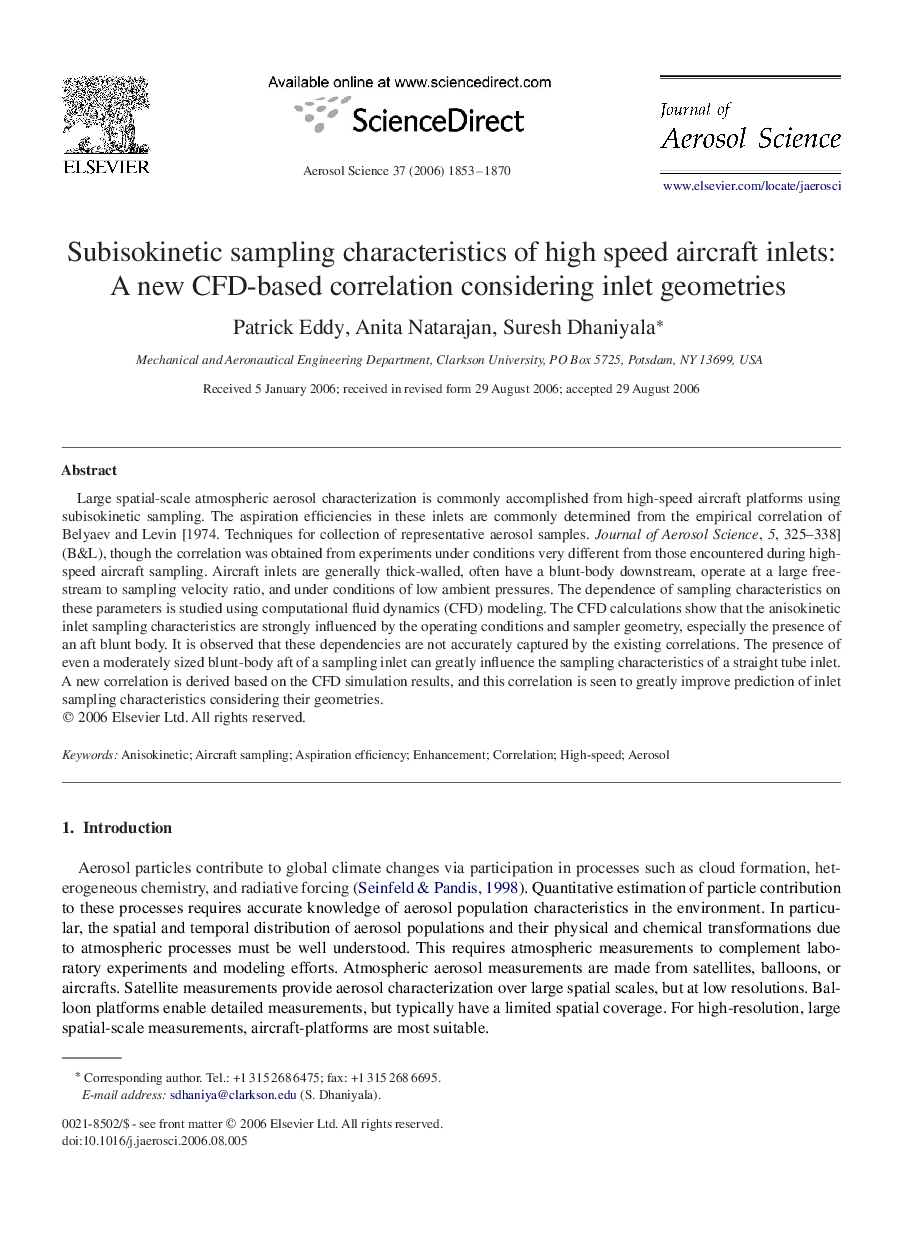| Article ID | Journal | Published Year | Pages | File Type |
|---|---|---|---|---|
| 4453374 | Journal of Aerosol Science | 2006 | 18 Pages |
Large spatial-scale atmospheric aerosol characterization is commonly accomplished from high-speed aircraft platforms using subisokinetic sampling. The aspiration efficiencies in these inlets are commonly determined from the empirical correlation of Belyaev and Levin [1974. Techniques for collection of representative aerosol samples. Journal of Aerosol Science, 5, 325–338] (B&L), though the correlation was obtained from experiments under conditions very different from those encountered during high-speed aircraft sampling. Aircraft inlets are generally thick-walled, often have a blunt-body downstream, operate at a large freestream to sampling velocity ratio, and under conditions of low ambient pressures. The dependence of sampling characteristics on these parameters is studied using computational fluid dynamics (CFD) modeling. The CFD calculations show that the anisokinetic inlet sampling characteristics are strongly influenced by the operating conditions and sampler geometry, especially the presence of an aft blunt body. It is observed that these dependencies are not accurately captured by the existing correlations. The presence of even a moderately sized blunt-body aft of a sampling inlet can greatly influence the sampling characteristics of a straight tube inlet. A new correlation is derived based on the CFD simulation results, and this correlation is seen to greatly improve prediction of inlet sampling characteristics considering their geometries.
